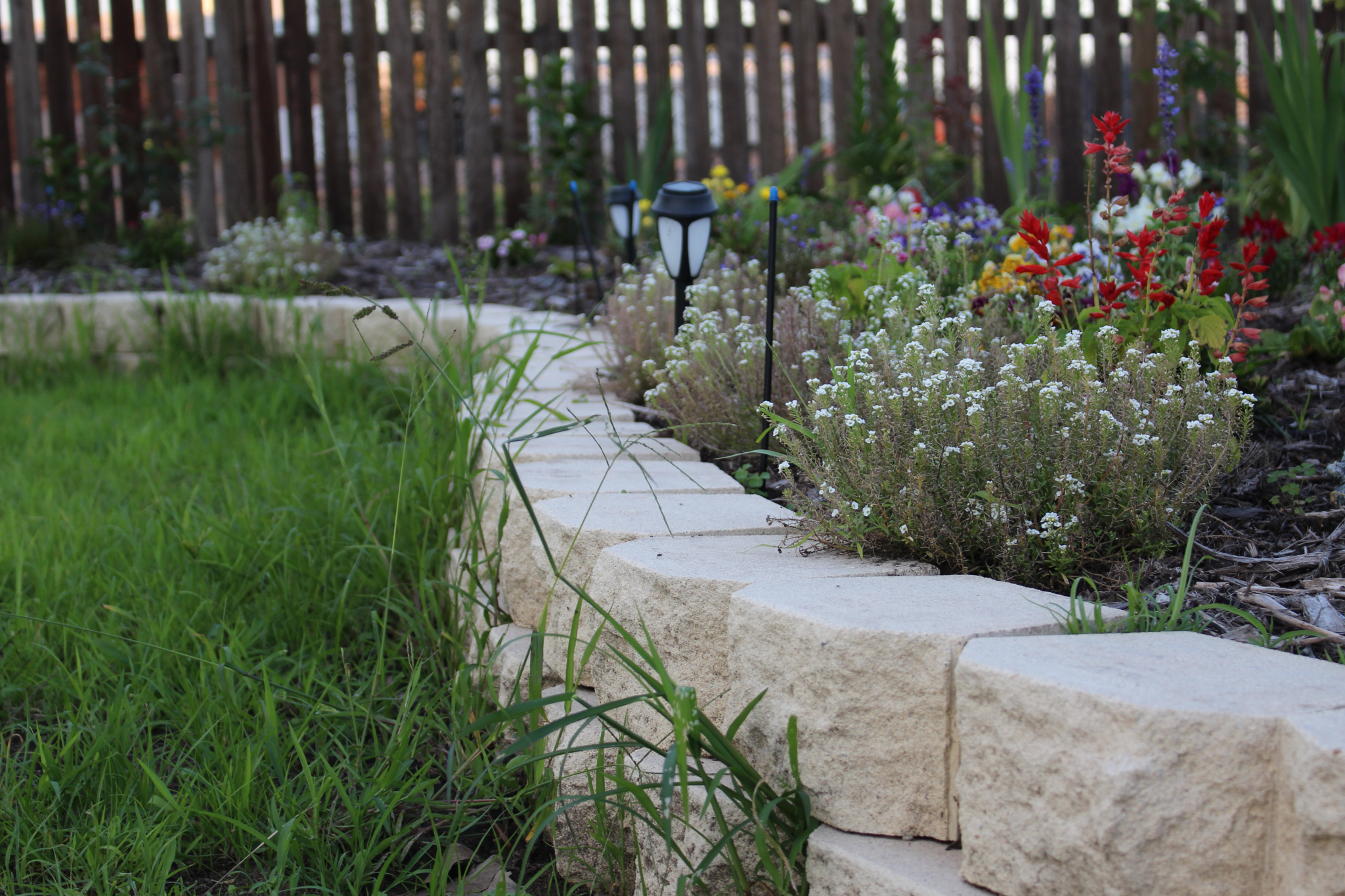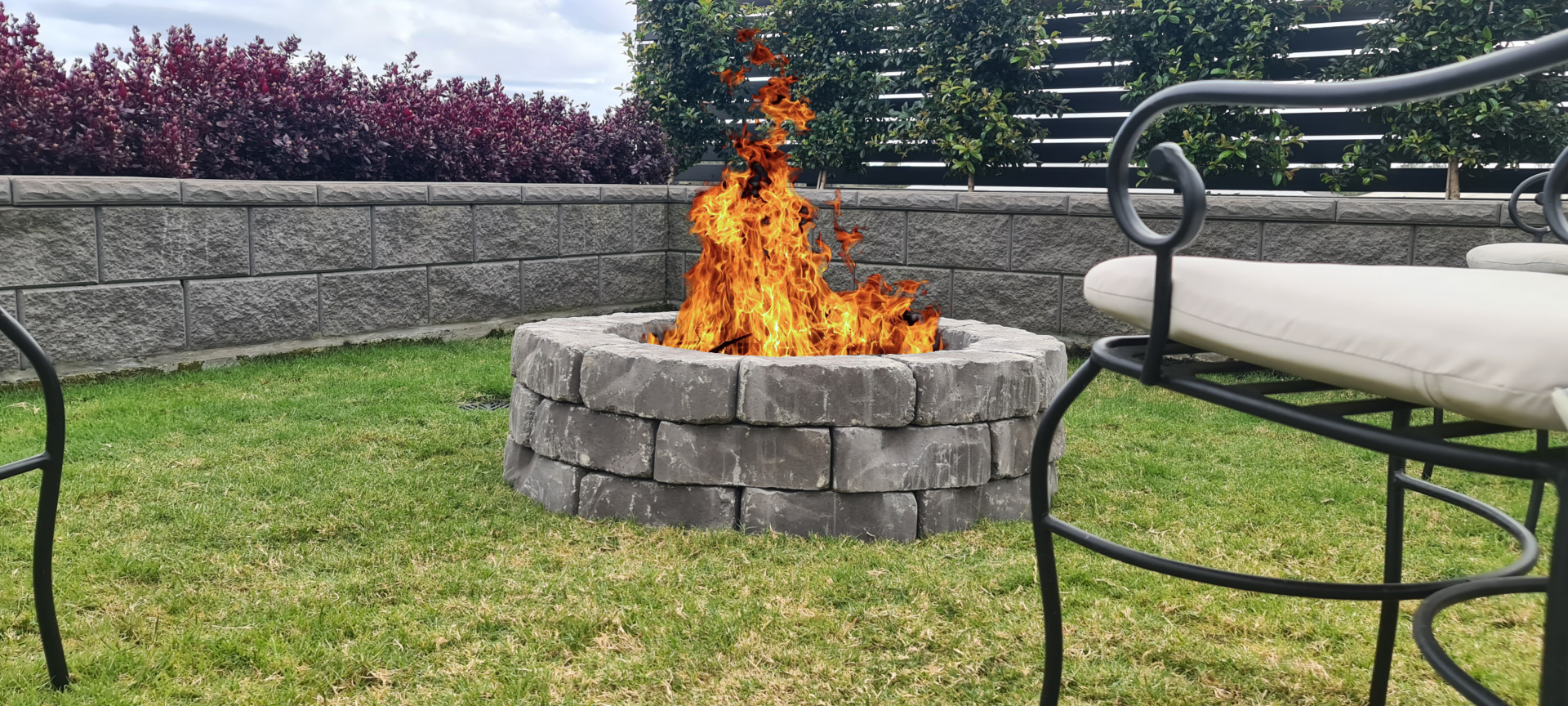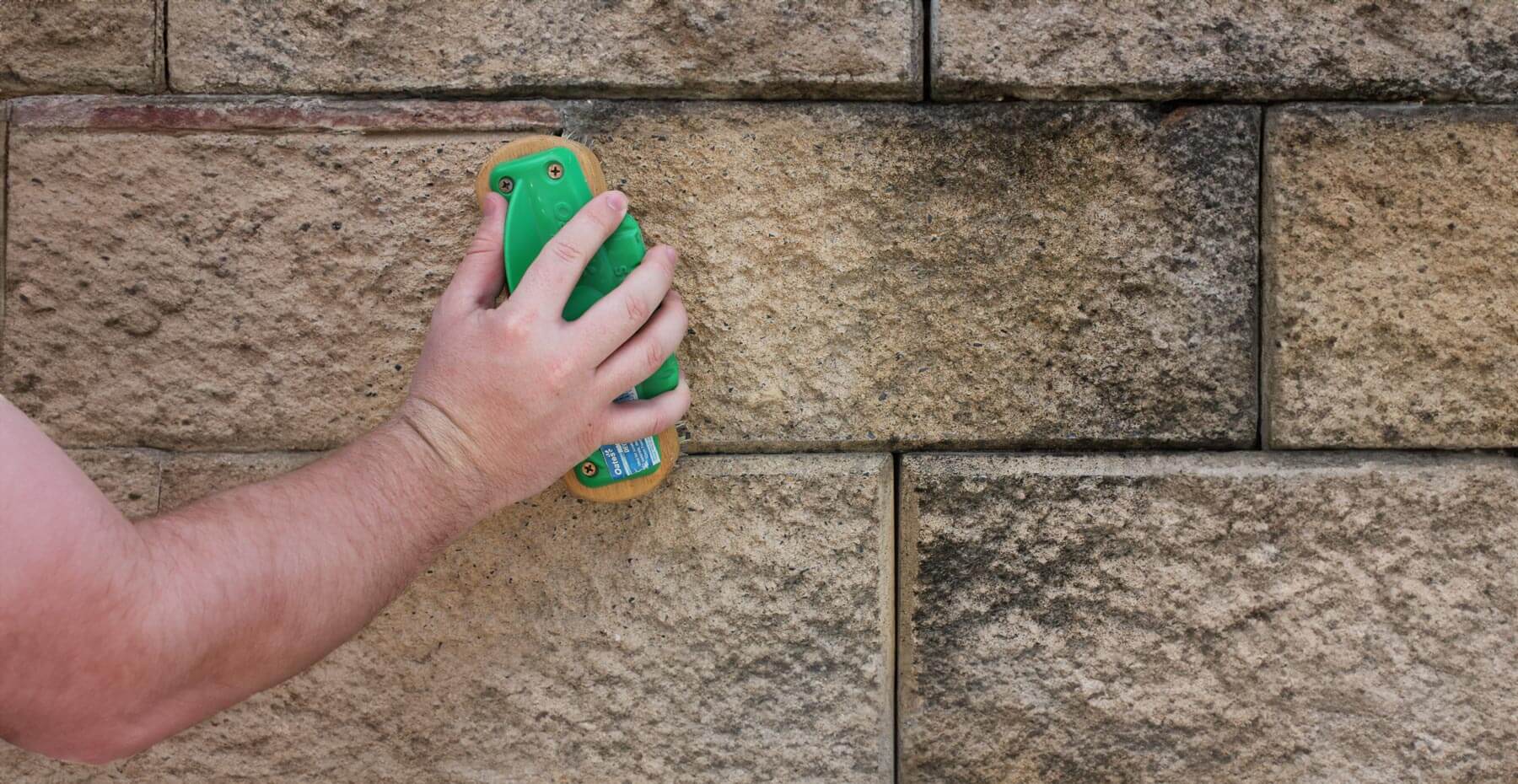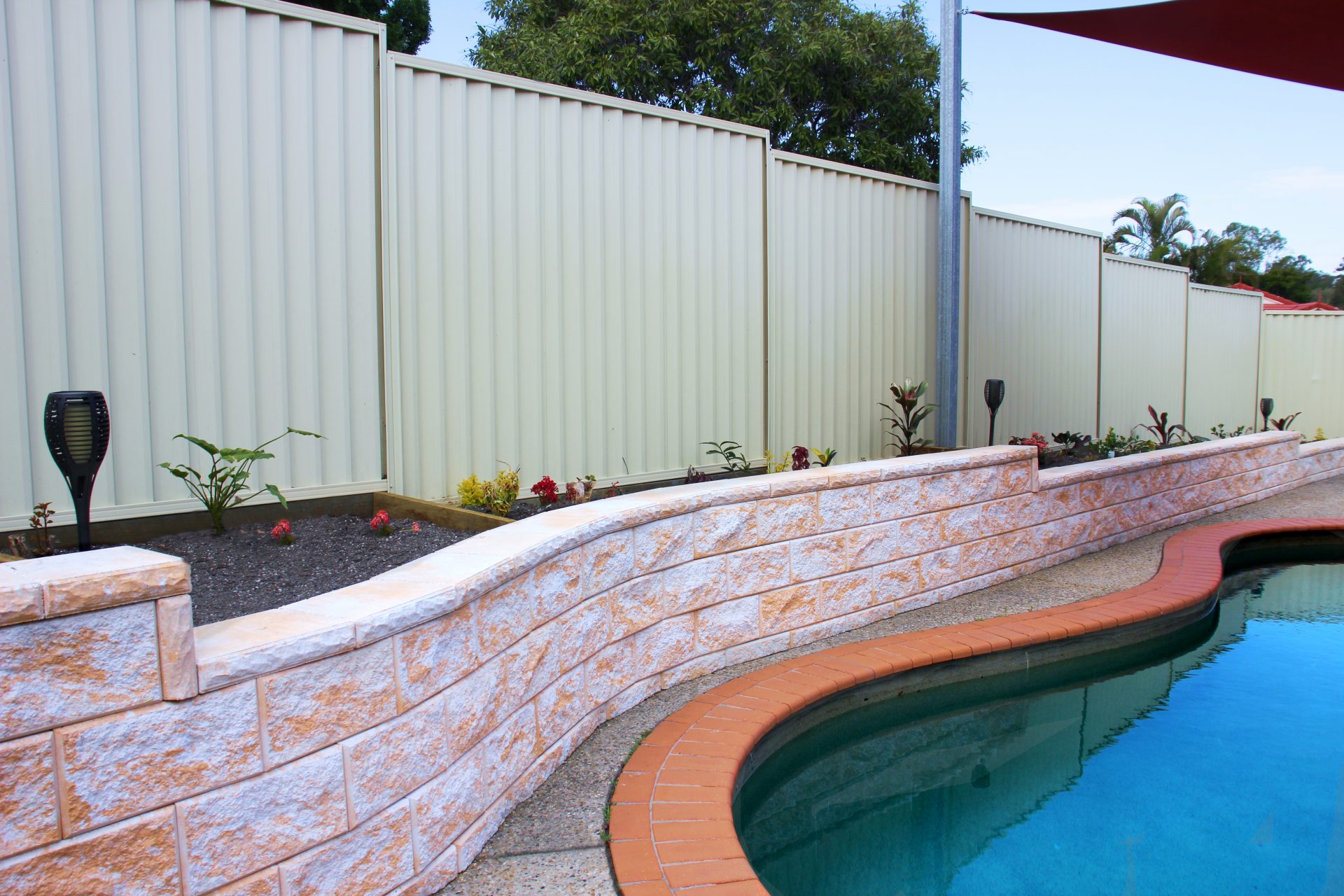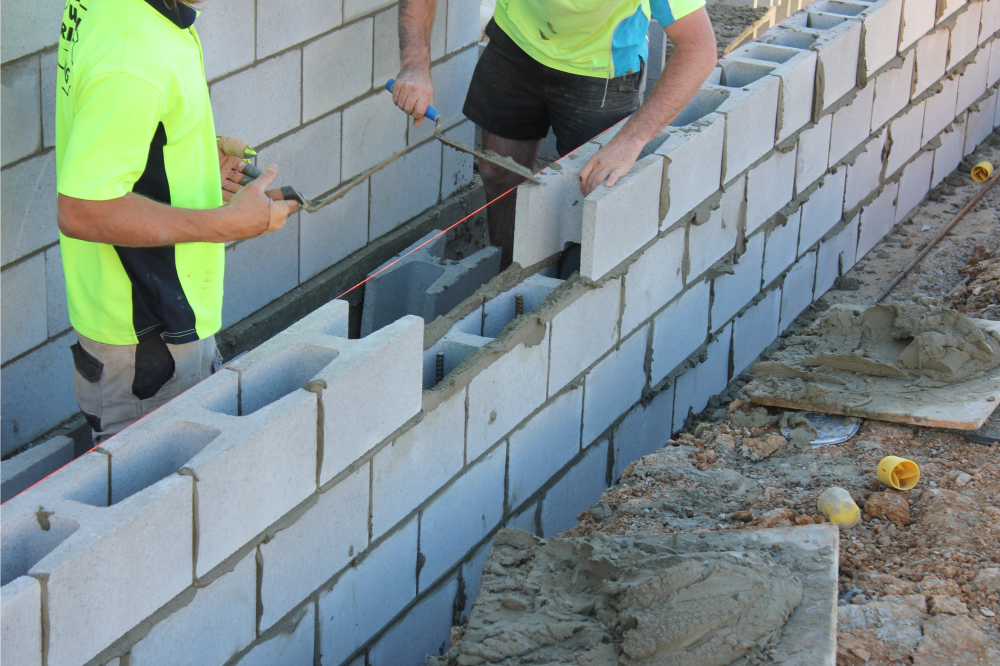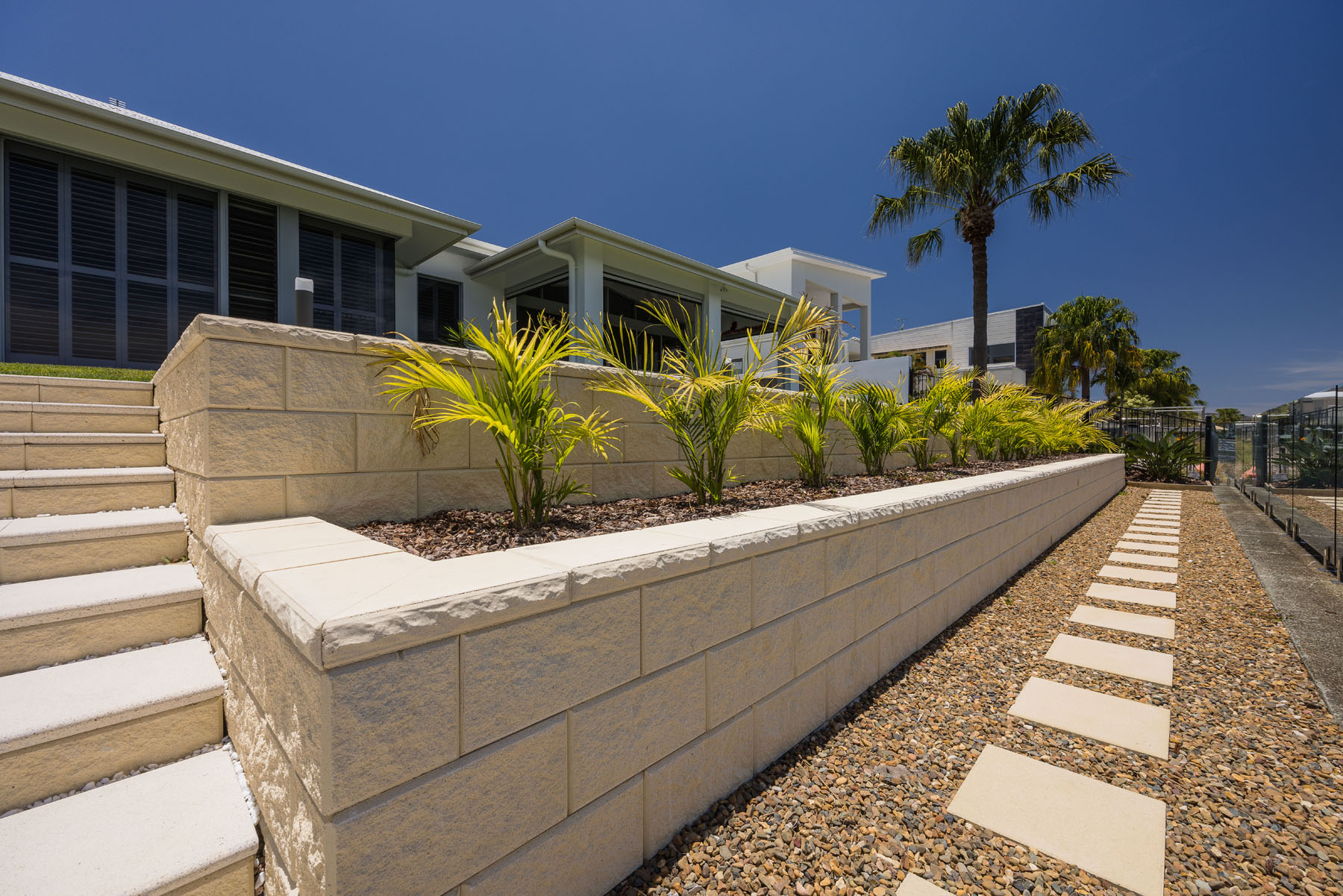Have you ever spent time mowing your grass only to finish with weeds and long grass still un-cut around the edges of your lawn where the mower wouldn’t reach?
A mowing strip is a simple solution to this problem that has annoyed homeowners for decades.
What is a mowing strip?
A mowing strip is a narrow strip of concrete or pavers that separates garden walls or retaining walls from a lawn.
Mowing strips are set in level with the lawn so you can run the wheels of the mower along the strip and mow right to the edge of the lawn.
Other types of mowing strips also serve the purpose of a garden edge, such as the AdraPAVE Charcoal garden edge displayed in the gallery. This type of mowing strip creates a simple garden border as well as providing a level strip to run the wheels of the mower along.
How does a mowing strip save time?
If you have a retaining wall or garden wall beside your lawn, it can be very difficult to mow directly beside the wall because the rough edge of the wall gets in the way. A mowing strip gives you enough space to mow beside the wall while leaving no blade of grass un-mowed.
Being able to mow to the edge of your lawn cuts out the painstaking trimming process, saving you time (and money) every time you have to mow.
How can you create a mowing strip?
A mowing strip can be as simple as a narrow strip of concrete about 5-10cm wide set along the edge of the garden. Simply dig a shallow trench beside the wall, fill with concrete and screed with a small hand held screed. If you haven’t built your wall yet, when you do, include some extra width in the footing of your wall to create the mowing strip.
For more ideas – go to our Blog
Don ‘t forget to follow us on Facebook for fortnightly blog updates!

